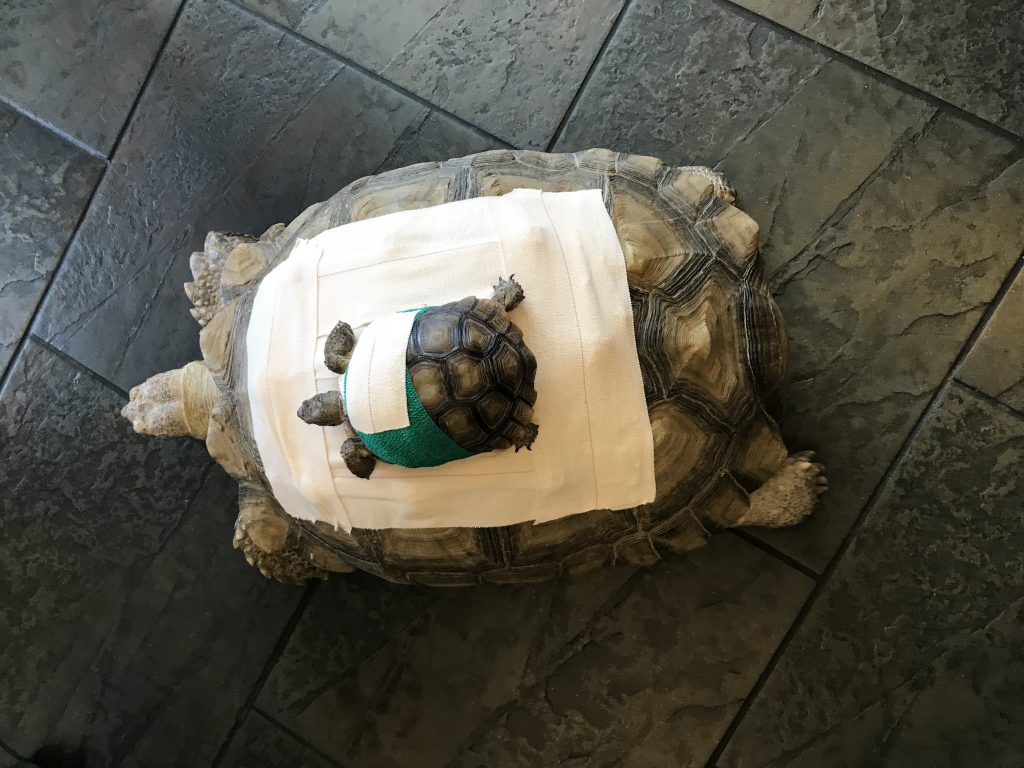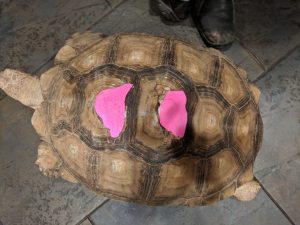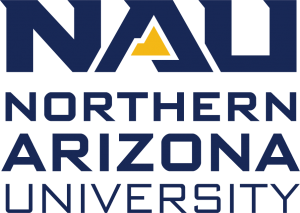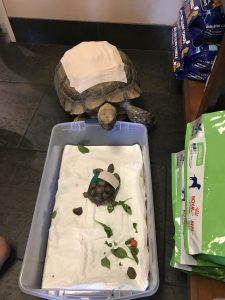
These days, you can 3-D print toys, full-size skeletons, Halloween masks, art projects, mechanical parts and building blocks. You can also print tortoise shells—or, as the MakerLab at Northern Arizona University’s Cline Library did recently, implants for damaged tortoise shells to help a couple of local pets survive.
Dr. Tereza DeMuth, a veterinarian at Canyon Pet Hospital, approached Cline Library staff with her dilemma—a 75-pound tortoise who’d survived a car accident but had two holes in her shell. Left open, Daisy was exposed to infection and potential damage to her spine. The holes were bandaged, but they required frequent changes, and it wasn’t Daisy’s favorite thing. Typically, prosthetic fixes to a tortoise shell could cost hundreds of dollars.
3-D printing, however, opened up some new, much less expensive options. Kathleen Schmand, director of development and communications for Cline Library, Andrew See, head of user services for the library, and art professor David Van Ness, the director of the New Media Art program, went to the pet hospital to meet Daisy.
Van Ness did laser scans of Daisy’s broken shell pieces, which produced a model of the same size and proportions. He then used a program called ZBrush to touch up the scans. That’s how it worked in theory, anyway. In practice, there were a few attempts to get the size right and a couple of different scans, including attempting to fit the pieces on and learning they didn’t have all the missing pieces to begin with.
“It’s really that process of prototyping—printing out what you think is going to work and then actually measuring it against the reality and adjusting it,” Schmand said.
They looked at a couple of different options for printing materials, eventually settling on polylactic acid (PLA), which is a biodegradable, environmentally friendly material. Van Ness said they considered chitosan, a material made of ground-up shrimp and cricket shells, which would be similar in structure to the tortoise shell. But that material and the necessary equipment is harder to get, and with their time frame, they opted for the PLA, which is used in the all of the library’s 3-D printers.
It will degrade over time, Van Ness said, which for art would require some additional intervention. Since Daisy’s shell pieces will need to be replaced every year or so, they’re less worried about the material’s longevity.
The cost for this prosthetic—about $20, including the multiple prints they had to make.
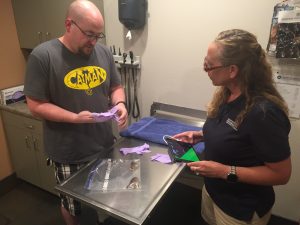
Everyone was feeling pretty good about moving forward when Schmand got another referral from Canyon Pet Hospital. Daisy had a new friend, a 1.5-pound Mojave desert tortoise named Tim who’d lost a chunk of shell to a curious gnawing puppy, leaving his liver exposed.
“Both tortoises were at high risk of infection and sepsis and so had to endure bandage changes every three days for about two months before the wounds were clean and healthy enough to cover with implants,” DeMuth said.
Van Ness, See and Schmand met with Tim’s owner in the MakerLab with their scanning tools. This was harder to create because they weren’t scanning a broken-off piece, Van Ness said, so he had to get more creative in the design. He debated using plasticine, an oil-based modeling clay, to sculpt the needed piece onto Tim’s shell, then scan the sculpture of it and use that as a base. It turned out to be unnecessary, though, as Tim’s shell is healing.
“He needs a little bit of armor that can be left on for a shorter period of time,” Schmand said. “He’s healing at a really fast rate.”
For all the humans involved, this is an exciting development. Van Ness, who was a consultant for the library as they designed the Maker Lab and whose students are the most frequent users, sees it as one more link bridging art and science, a connection around which he has built his career. He spends as much time with 3-D sculpting as he does more traditional sculpting, and this experience demonstrates the value of new media to all sorts of industries.
Schmand is thrilled with every opportunity to try something new in the MakerLab. Professors have printed replicas of human bones from centuries ago, she knows of doctors who have used 3-D printed anatomically accurate hearts to show pediatric patients what will happen during their surgeries, and a student has printed a blood vessel to describe what an aneurysm looks like.
“The opportunities are limitless,” she said. “You just never know what you might get approached with to recreate or produce.”
For DeMuth, it’s good to have one more tool in her arsenal to help her patients heal.
“Unlike in human medicine, our animal patients come in a very diverse range of shapes and sizes, so having the ability to create materials tailored to each unique individual makes this a very exciting time to be in veterinary practice,” she said.
As for Daisy and Tim, both are responding well to treatment. For the rest of her life, Daisy will have the two implanted pieces on her shell—a little reptile bling, if you will—and she’ll be able to go home and run around the yard like she did before the accident. (Tortoises, contrary to popular opinion, are not slow. Daisy escaped from the yard once.) As Tim’s shell continues to heal, he will eventually lose the cast entirely.
Interested in owning your own tortoise? The Arizona Game and Fish Department has 80 desert tortoises up for adoption. Learn more about what tortoises need to survive and how you can apply.
Heidi Toth | NAU Communications
(928) 523-8737 | heidi.toth@nau.edu
